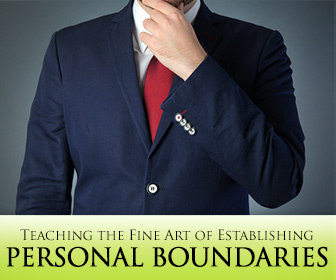Iím Afraid That Wonít Be Possible (Really): Teaching ESL Students the Fine Art of Establishing Personal Boundaries


A boundary is where I can claim some personal item, space or mental process as mine. Boundaries have long been a problem in the high school or college classroom as young adults may have little understanding of adult boundaries as they have just begun to navigate the adult world. Different understandings of boundaries exist across cultures as well: a well-known example is personal space and how it varies across culture. For example, most Americans require more personal space than many other countries, and if someone, especially someone you don’t know well, moves into that personal space, they are likely to become uncomfortable. Besides physical boundaries, there are more abstract boundaries, such as emotional boundaries, reserving as my right to determine my own feelings or refusing to take responsibility for someone else’s. Annoyance, even anger, and a sense of violation come with others crossing our personal boundaries. These feelings have implications for the individual student, teacher and the classroom as a whole. Protecting boundaries, and modeling this for students, is important as students may have very different boundaries from the teacher as an individual as well as from what is expected in the classroom and broader culture.
Finally, students may have little knowledge of how to protect their boundaries in an appropriate manner. Therefore, it important for the teachers to model claiming and protecting boundaries while respecting other’s.Students may not even be consciously aware of the concept of “boundaries” even if they feel uneasy when their own are violated.

Before teaching how to protect boundaries, “boundaries” and violations of them must be defined. Some broad categories of boundaries violations follow.
Violations of personal space include sitting or standing too close, as already mentioned. This is often simply a cultural misunderstanding: different cultures have different notions of what is appropriate social distance. It also can be quite deliberate: standing too close to someone can signal a desire to dominate that individual’s movements. Violation of personal space can proceed more seriously, and usually deliberately, into violations against one’s person itself, such as uninvited and unwanted touching.
Boundaries surround not only one’s person but also personal property. Violations against property include examples such as “borrowing” something and not returning it, borrowing it without asking, or damaging it accidentally or otherwise, and not admitting it or offering to fix it or replace it. Again, there is a continuum here from non-serious to more critical concerns. Students frequently borrow classroom items like pencils, pens and paper and then forget to return them. More serious would be taking confidential material, such as the grade book or stealing books or classroom equipment or damaging them.
Violations against one’s mental space are among the most insidious because they are more difficult to name and protect. Prying into personal information and telling another individual what she or thinks or feels are common violations. Again, this may be unintentional as cultures widely differ on what “privacy” is and how much should be shared with others.

These methods can be taught explicitly through discussion and lecture as well as implicitly through modeling.
Just identifying why you are uneasy is a first step. An example would be determining why you are suddenly tense or annoyed: perhaps another person is standing too close or asking things he doesn’t need to or shouldn’t know.
For example, “Standing so close makes me uncomfortable,” or “That is information I’d rather not give.”
This can be more direct, such as “Please have a seat, and I will help you in a moment” to the more direct “Please don’t touch that.” Again, indirectness is largely cultural—while many Americans will recognize “Have a seat” as often being a way of saying that their standing is a specific place is causing a problem, this isn’t always the case, and more directness may be required.

Discuss what is appropriate in American culture, such as what may or may not be asked. Or when reading or watching movies, point out the behavior of the characters: who is standing too close, for example, or why one character reacted with anger at being asked something. Letting students know when they’ve asked an inappropriate question is another method to teach about boundaries. This has to be done sensitively to avoid embarrassing the student, as she or he may have been unaware of the inappropriateness.
This is done largely through modeling: standing an appropriate distance from students, asking permission when borrowing something, such as a student’s pencil, or asking if it is all right to ask a specific question.
Sometimes having students take certain roles and acting out a situation, either through script or through improvisation, can teach a lot about boundaries. It can develop understanding about roles within culture. For example, students’ current understanding of how one relates appropriately to friends, teachers and classmates can be revealed through role playing and the boundaries with U.S. culture rehearsed. The language for talking about boundaries can also be taught when role-playing, such as how to tell politely tell someone she is asking a question you would rather not answer.
Teaching about boundaries is difficult due to varying individual and cultural notions about boundaries and has to be handled with sensitivity. However, it is necessary for students to develop understanding about expected boundaries in their new culture.